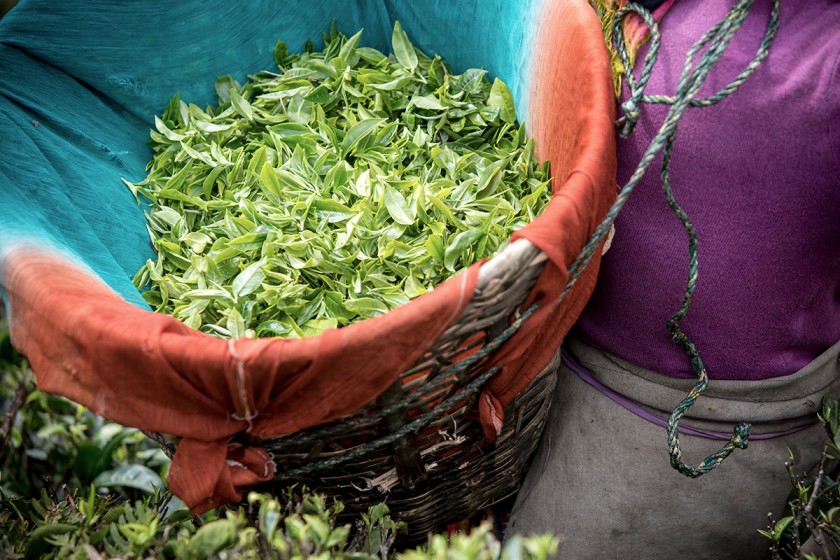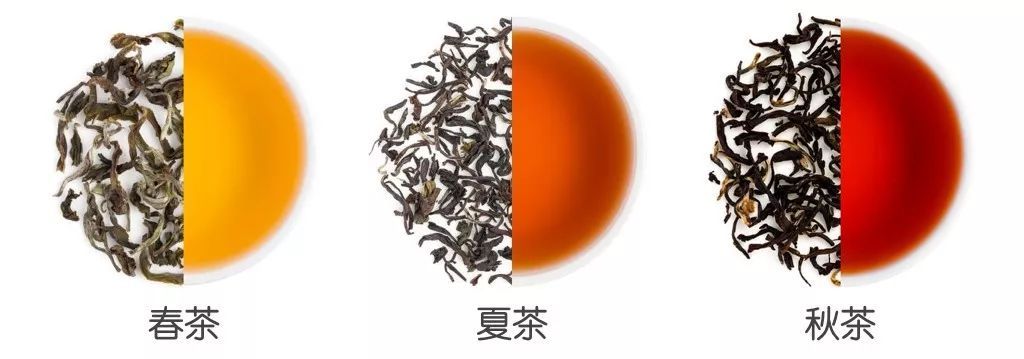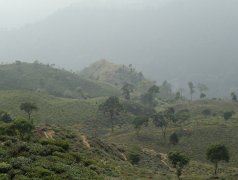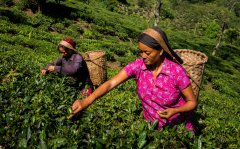Which is more caffeinated, tea or coffee? the characteristics of five kinds of Darjeeling black tea
Caffeine content in Darjeeling Tea
The amount of caffeine in Darjeeling Tea depends on how red it is. A cup of coffee for every 8 ounces of fluid contains about 50 milligrams of caffeine. This is higher than green tea, but lower than black Assam tea. It has very low acidity, especially compared with black tea or coffee.
The content of caffeine
Average caffeine content of 8-ounce drinks
24-40 mg of green tea
Darjeeling Tea is about 50 mg.
Matcha 25-70 mg
Brew coffee 85-200 mg

Purchase and storage
Darjeeling Tea can buy tea in bulk or bags from better grocery stores, coffee / tea stores or online retailers. Darjeeling Tea is very fragrant, but he will lose his fragrance if he is exposed to the air for a long time. They are particularly sensitive to moist air, direct sunlight, heat and strong odors, so it is best to store tea in a sealed container in a dark pantry. Tea is best drunk within two years after harvest.
Types of Darjeeling black tea
Three main tea seasons and the other two tea seasons will produce different types of Darjeeling Tea.

Darjeeling early picking tea: the first kind of tea harvested in spring after winter dormancy. The color of the tea is light and clear. Tea has a bright and unique floral smell. Because of their freshness and color, the first batch of tea is usually more expensive than other teas.
Darjeeling summer picking tea: dark amber color and rich taste, in sharp contrast to spring picking tea. Tea leaves have purple flowers and can have the taste of fruit. In the world of tea, many people compare the taste of the second tea season to that of musk grapes. The unique taste is caused by a combination of unique weather, topography and plant types. Because of this unique taste, some tea appreciators prefer to pick tea in summer.
Darjeeling autumn tea picking: when brewing, the color of the tea in this tea season will become dark or copper. The leaves in Darjeeling are bigger than those in other seasons in autumn. The price of this type of tea is often slightly lower than that of the first and second tea seasons.
Mid-season tea: this kind of tea tends to have characteristics similar to those made for the first time, but the quality is usually slightly lower.
Monsoon rain tea picking: this kind of tea has a higher degree of oxidation and a lower price. It is usually used to make masala tea. It is rarely exported between brewing tea and monsoon brewing tea.
Please keep in mind that in addition to distinguishing types by tea season, Darjeeling Tea also has a grading system. Tea is graded according to its size and quality. The graded tea is divided into four categories: whole leaves, broken leaves, slices of tea, and tea powder. The whole leaf is the highest grade, and the tea powder is the lowest. Tea powder is the small leaf particles used in tea bags, and tea powder is basically the waste left by tea leaves.
Important Notice :
前街咖啡 FrontStreet Coffee has moved to new addredd:
FrontStreet Coffee Address: 315,Donghua East Road,GuangZhou
Tel:020 38364473
- Prev

Do wet people drink black tea or green tea? are the three brands of Darjeeling black tea expensive? how do you drink it?
Darjeeling Tea is a famous tea variety, which is exported all over the world. It grows in Darjeeling, West Bengal, India. Darjeeling Tea is unique because tea can be processed in different ways and made into black, green, white, or oolong tea. Darjeeling Black Tea Origin: Darjeeling area, West Bengal, India alias: champagne temperature in black tea: 91-97 degrees Celsius
- Next

Which of the world's four black teas is best to drink Assam and Darjeeling black tea taste difference
India is one of the major tea producing countries in the world and it grows some of the best tea. Although it produces a wide variety of teas, it is best known for its black teas, including Assam, Darjeeling and Nilgiri. And, of course, there is the popular Indian tea, which uses a rich Chinese spice. India's geographical conditions allow for many different climatic conditions, resulting in
Related
- What effect does Italian American coffee with filter paper have? Will coffee taste better if it is put on filter paper at the bottom of the powder bowl?
- What is the color difference in coffee beans? What are the characteristics of honey processed coffee beans? Why are the anaerobically treated coffee beans uneven in color?
- How does novice Xiaobai quickly get started and make coffee? Newbies learn to make coffee by hand and share the specific steps and process process!
- Costa tea has a shelf life of 100 years?! Expert: Unable to verify
- It's a huge uproar! American milk addition was rejected by Manner employees?!
- Mocha pot coffee bean recommendations| How fine and how much powder should be used for grinding? What parameter ratios do I need to use to make milk with Mocha pot coffee?
- What are the characteristics of the world's top ten coffee beans treated with Costa Rica honey? How to make black honey kadura from Tarazhu Pilon Processing Plant taste good?
- How to make deep-roasted coffee? What grinding water temperature does authentic Jamaica Blue Mountain No. 1 coffee use to brew it well?
- Selected high-grade rose summer coffee flavor tasting guide Why Panama rose summer has the aroma of flowers and fruits
- What equipment does a novice Xiaobai need to buy to learn to make coffee? Filter cup electronic scale bean grinder manual flushing pot purchase guide

